下面为大家整理一篇优秀的assignment代写范文- Metropolitan Museum of Art,供大家参考学习,这篇论文讨论了大都会艺术博物馆。大都会艺术博物馆的整体体验是相当有意义的,它使作者获得了很多知识,对美国历史有了更好更深刻的理解,尤其是关于内战的历史。它还让作者从许多不同的角度看到了当时人们的生活。巨大而杰出的艺术品给了作者一个伟大的教育时刻。
I walked straight to the Medieval Art section and saw the massive Christmas tree & Creche. It standed in front of a big iron fence, bringing people the atmosphere of new year. There were about forty to fifty angels with wings and different gestures on the tree, wearing colorful dresses. On the bottom around the tree there were also lifelike figures of people and animals. It was such a beautiful artwork so that many people with their kids spent a few minutes standing there and watching it, with smiles on their face.
I took a picture of the tree, and then turned right into a spacious room with a glass ceiling. The ceiling was divided into hundreds of lattices by brackets and brought in plenty of daylights. The room was fulfilled with collections of European sculptures and decorative arts, which were mostly created from early 15th century to the early 20th century. They showed graceful body figures of human beings, and reflected the development of art forms in European countries.
After photographing these sculptures, I reached the American Wing section, and went on the second floor for American paintings. There I found the portraits of George Washington painted by Gilbert Stuart. The one called the Gibbs-Channing-Avery Portrait, which was one of eighteen similar works known as the Vaughan group, was lifelike and iconic with Gilbert’s excellent painting skills. In this portrait, George Washington, with grey hair, white shirt and black jacket, had a composed and determined look on his face. It reflected Washington’s personality fairly well.
In Gallery 760 I found the huge oil painting, Washington Crossing the Delaware, by Emanuel Leutze. It occupied almost the entire surface of a wall in the room. George Washington was standing on a boat with his army, staring into the distance. His companions were boating and struggling with the floating ice on the river. It portraited the scene of Washington’s surprise attack on the Hessians at Trenton on December 25, 1776. The huge victory of the Battle of Trenton turned the tide of the War of Independence.
The collections of Hudson River School paintings were also shown in this room. Landscape painting’s unprecedented status during the Civil War era inspired artists like Frederic Edwin Church and Albert Bierstadt. Heart of the Andes, painted by Frederic Edwin Church, was a typical reflection of that spirit. Church painted this picture during his nine weeks trip to Ecuador of South American.
Another picture that caught my eyes was The Rocky Mountains, Lander’s Peak, by Albert Bierstadt. It was resulted from Bierstadt’s first trip to West. He named the central mountain in this picture as Lander’s Peak to commemorate Frederick W. Lander, the leader of his survey expedition, following his death in the Civil War.
In another gallery room I found The Last Moments of John Brown, made by Thomas Hovenden, John Brown, the controversial abolitionist that fought against the slavery, was kissing a baby in this picture, before the execution of his death penalty.
The artworks related to American Indian and Western were found in Gallery 765, On the Southern Plains, painted by Frederic Remington, referred to the American soldiers in the West, as well as the war against the Plains Indians in the 1860s.
Winslow Homer’s paintings were also found on this floor. His works reflected his understandings about the Civil War’s impact and meaning. The one attracted me most among the paintings was The Gulf Stream. In this picture a man was half-lying on a dismasted fishing boat, which was surrounded by turbulent streams and a group of sharks. Some art historians connected it to the period’s racial tensions.
The Sewing Woman, and Dust Storm Fifth Avenue, which were both painted by John Sloan, a representative artist of Ashcan School and American Realism, were found here too. They reflected Americans’ daily life at that time. George Bellows, another artist of Ashcan School, showed the same spirit in his paintings Tennis at Newport, and Up the Hudson.
Avenue of the Allies, Great Britain, 1918, painted by Childe Hassam, was in Gallery 769. Childe Hassam was an artist and pioneer of American Impressionism. The painting was created in 1918 and Hassam recorded the scene of Fifth Avenue draped with flags and loan banners for the promotion of savings bonds.
The time spent in the American Wing building was quite enjoyable. The retro decoration of the rooms and scenes from the paintings took me back to the 17th to 19th centuries. I was excited about being surrounded by those masterpieces of remarkable artists. I was also astonished by the amount of collections here. It showed the artists’ creative passion of that time.
Besides the paintings described above, I was also attracted to several other items. The first one was Diana, a bronze sculpture created by Augustus Saint-Gaudens. It was a figure of the Roman goddess of the hunt and the moon, Diana, who was aiming her bow and arrow.
Another one was The Sun Vow, a sculpture of Native American theme made by Hermon Atkins MacNeil. It portrayed the moment that an Indian boy just released his arrow.
The bronze sculpture, as well as a funerary monument, Tome effigy of Elizabeth Boott Duveneck, was made by Frank Duveneck, who was also Elizabeth’s husband, with the guidance of Clement J. Barnhorn.
Hummingbirds and Passionflowers by Martin Johnson Heade, was an interesting painting, which expressed the dualities and interconnectedness between the hummingbird and the passionflowers with strong colors.
Henry Alexander’s work, In the Laboratory, showed the daily life of Thomas Price, who was a chemist and assayer. In the picture Thomas was working on some chemical materials, surrounded by his equipment. The realistic portrayal of the scene attracted me.
The overall experience in the Metropolitan Museum of Art was quite meaningful. It made me able to acquire knowledge and have a better and deeper understanding of American histories. Especially the history about the Civil War. It also gave me the pictures of people’s life at that time from many different angles. The tremendous and outstanding artworks gave me a great educational moment. I could not wait for the next visit to explore more parts of the museum.
51due留学教育原创版权郑重声明:原创assignment代写范文源自编辑创作,未经官方许可,网站谢绝转载。对于侵权行为,未经同意的情况下,51Due有权追究法律责任。主要业务有assignment代写、essay代写、paper代写、北美作业代写服务。
51due为留学生提供最好的北美作业代写服务,亲们可以进入主页了解和获取更多代写范文 提供北美作业代写服务,详情可以咨询我们的客服QQ:800020041。
I walked straight to the Medieval Art section and saw the massive Christmas tree & Creche. It standed in front of a big iron fence, bringing people the atmosphere of new year. There were about forty to fifty angels with wings and different gestures on the tree, wearing colorful dresses. On the bottom around the tree there were also lifelike figures of people and animals. It was such a beautiful artwork so that many people with their kids spent a few minutes standing there and watching it, with smiles on their face.
I took a picture of the tree, and then turned right into a spacious room with a glass ceiling. The ceiling was divided into hundreds of lattices by brackets and brought in plenty of daylights. The room was fulfilled with collections of European sculptures and decorative arts, which were mostly created from early 15th century to the early 20th century. They showed graceful body figures of human beings, and reflected the development of art forms in European countries.
After photographing these sculptures, I reached the American Wing section, and went on the second floor for American paintings. There I found the portraits of George Washington painted by Gilbert Stuart. The one called the Gibbs-Channing-Avery Portrait, which was one of eighteen similar works known as the Vaughan group, was lifelike and iconic with Gilbert’s excellent painting skills. In this portrait, George Washington, with grey hair, white shirt and black jacket, had a composed and determined look on his face. It reflected Washington’s personality fairly well.
In Gallery 760 I found the huge oil painting, Washington Crossing the Delaware, by Emanuel Leutze. It occupied almost the entire surface of a wall in the room. George Washington was standing on a boat with his army, staring into the distance. His companions were boating and struggling with the floating ice on the river. It portraited the scene of Washington’s surprise attack on the Hessians at Trenton on December 25, 1776. The huge victory of the Battle of Trenton turned the tide of the War of Independence.
The collections of Hudson River School paintings were also shown in this room. Landscape painting’s unprecedented status during the Civil War era inspired artists like Frederic Edwin Church and Albert Bierstadt. Heart of the Andes, painted by Frederic Edwin Church, was a typical reflection of that spirit. Church painted this picture during his nine weeks trip to Ecuador of South American.
Another picture that caught my eyes was The Rocky Mountains, Lander’s Peak, by Albert Bierstadt. It was resulted from Bierstadt’s first trip to West. He named the central mountain in this picture as Lander’s Peak to commemorate Frederick W. Lander, the leader of his survey expedition, following his death in the Civil War.
In another gallery room I found The Last Moments of John Brown, made by Thomas Hovenden, John Brown, the controversial abolitionist that fought against the slavery, was kissing a baby in this picture, before the execution of his death penalty.
The artworks related to American Indian and Western were found in Gallery 765, On the Southern Plains, painted by Frederic Remington, referred to the American soldiers in the West, as well as the war against the Plains Indians in the 1860s.
Winslow Homer’s paintings were also found on this floor. His works reflected his understandings about the Civil War’s impact and meaning. The one attracted me most among the paintings was The Gulf Stream. In this picture a man was half-lying on a dismasted fishing boat, which was surrounded by turbulent streams and a group of sharks. Some art historians connected it to the period’s racial tensions.
The Sewing Woman, and Dust Storm Fifth Avenue, which were both painted by John Sloan, a representative artist of Ashcan School and American Realism, were found here too. They reflected Americans’ daily life at that time. George Bellows, another artist of Ashcan School, showed the same spirit in his paintings Tennis at Newport, and Up the Hudson.
Avenue of the Allies, Great Britain, 1918, painted by Childe Hassam, was in Gallery 769. Childe Hassam was an artist and pioneer of American Impressionism. The painting was created in 1918 and Hassam recorded the scene of Fifth Avenue draped with flags and loan banners for the promotion of savings bonds.
The time spent in the American Wing building was quite enjoyable. The retro decoration of the rooms and scenes from the paintings took me back to the 17th to 19th centuries. I was excited about being surrounded by those masterpieces of remarkable artists. I was also astonished by the amount of collections here. It showed the artists’ creative passion of that time.
Besides the paintings described above, I was also attracted to several other items. The first one was Diana, a bronze sculpture created by Augustus Saint-Gaudens. It was a figure of the Roman goddess of the hunt and the moon, Diana, who was aiming her bow and arrow.
Another one was The Sun Vow, a sculpture of Native American theme made by Hermon Atkins MacNeil. It portrayed the moment that an Indian boy just released his arrow.
The bronze sculpture, as well as a funerary monument, Tome effigy of Elizabeth Boott Duveneck, was made by Frank Duveneck, who was also Elizabeth’s husband, with the guidance of Clement J. Barnhorn.
Hummingbirds and Passionflowers by Martin Johnson Heade, was an interesting painting, which expressed the dualities and interconnectedness between the hummingbird and the passionflowers with strong colors.
Henry Alexander’s work, In the Laboratory, showed the daily life of Thomas Price, who was a chemist and assayer. In the picture Thomas was working on some chemical materials, surrounded by his equipment. The realistic portrayal of the scene attracted me.
The overall experience in the Metropolitan Museum of Art was quite meaningful. It made me able to acquire knowledge and have a better and deeper understanding of American histories. Especially the history about the Civil War. It also gave me the pictures of people’s life at that time from many different angles. The tremendous and outstanding artworks gave me a great educational moment. I could not wait for the next visit to explore more parts of the museum.
51due留学教育原创版权郑重声明:原创assignment代写范文源自编辑创作,未经官方许可,网站谢绝转载。对于侵权行为,未经同意的情况下,51Due有权追究法律责任。主要业务有assignment代写、essay代写、paper代写、北美作业代写服务。
51due为留学生提供最好的北美作业代写服务,亲们可以进入主页了解和获取更多代写范文 提供北美作业代写服务,详情可以咨询我们的客服QQ:800020041。











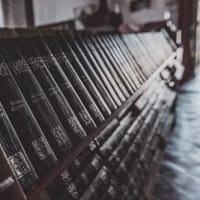

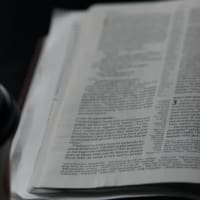
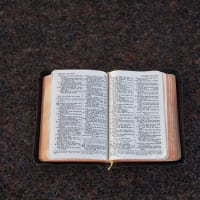
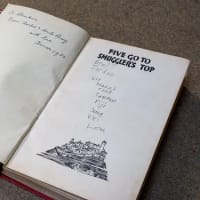
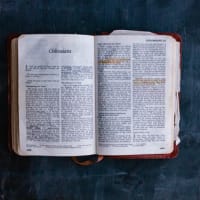
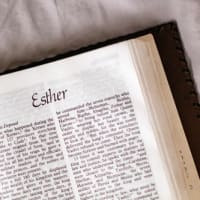

※コメント投稿者のブログIDはブログ作成者のみに通知されます